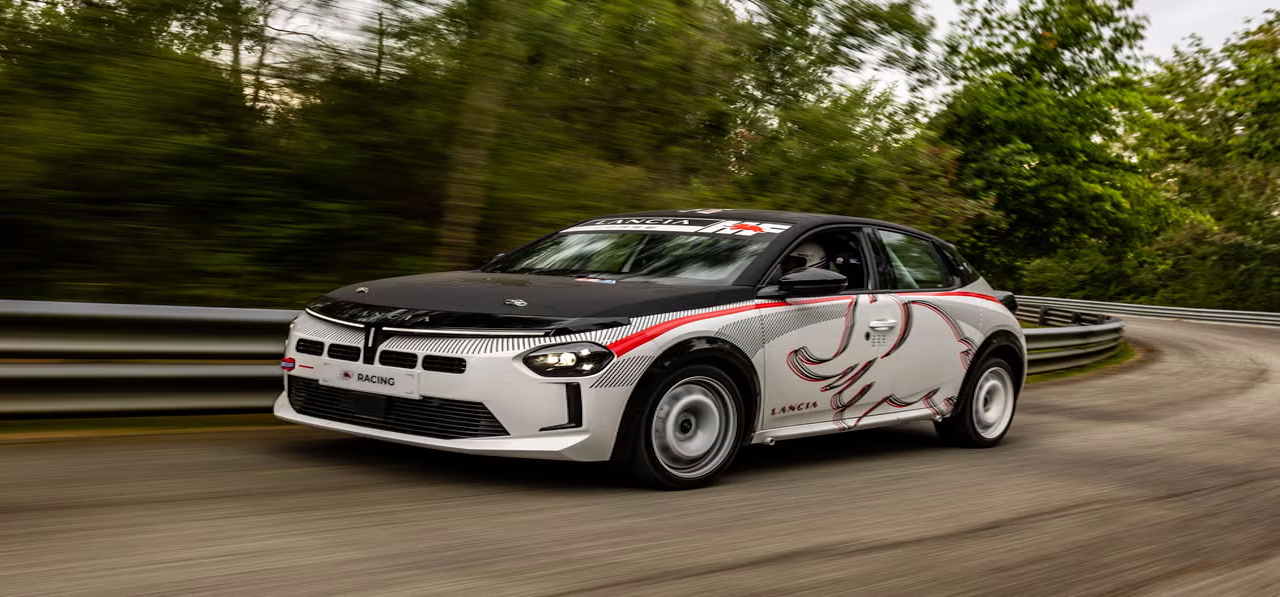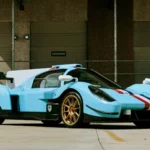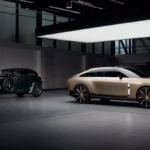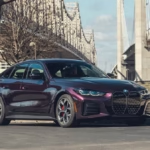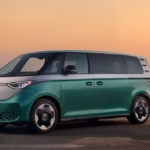The automotive world is abuzz with exciting news from the Italian marque, Lancia. The brand, long a shadow of its former glory, has officially confirmed a significant step in its revival strategy: the return of the revered “HF Integrale” designation.
This badge, synonymous with the fastest and most celebrated rally-inspired Lancias, including the legendary Delta HF Integrale, has been conspicuously absent from the automotive landscape for an extended period. Its reintroduction signals a profound tribute to Lancia’s rich motorsport heritage and ignites fervent speculation about the brand’s future direction.
For decades, the HF Integrale badge adorned Lancia’s most formidable competition and homologation specials. These were cars designed not just for the road, but to conquer the treacherous stages of rally racing. While new models bearing this iconic name are still some way off from full production, this strategic move could very well be the “shot in the arm Lancia needs to return to form.” More intriguingly, this revival opens up the tantalizing possibility of a “new Delta model,” a car that holds immense symbolic value for enthusiasts worldwide.
The Delta HF Integrale, a compact hatchback with turbocharged power and all-wheel drive, was a titan of the World Rally Championship (WRC) in the late 1980s and early 1990s. Its success was so profound that it became an Italian forerunner to the iconic rally battles later waged between the Subaru WRX and the Mitsubishi EVO. These original Delta Integrale models remain highly collectible today, boasting a cult following.
From Faded Glory to Future Plans: Lancia’s Journey
Among the vast constellation of automotive brands under the Stellantis umbrella, few have experienced as dramatic a decline from their illustrious past as Lancia. Once a beacon of innovation and engineering prowess, Lancia boasted groundbreaking achievements such as manufacturing the “world’s first production V-6” engine, found in the elegantly designed Aurelia B20 GT. The brand also accumulated an astounding “no fewer than 11 WRC Manufacturers’ Championships,” a record that solidifies its legendary status in motorsport history. Yet, for a considerable period, Lancia’s product portfolio dwindled to little more than the Ypsilon, a subcompact model closely related to the Fiat 500.
Fortunately, there are now definitive “signs that things are heating up” for the struggling brand. While the Ypsilon continues to be produced, now on a new, more modern platform, Lancia is strategically leveraging its celebrated heritage to forge a path forward. A fitting tribute to its racing lineage, this exciting news arrives hot on the heels of Lancia’s recent “return to the rallying stage.”
The brand has re-entered motorsport with racing versions of the Ypsilon. The Rally4 HF was introduced first, and more recently, the Rally6 HF has followed. These rally machines are not merely symbolic; they are actively competing and bringing back Lancia’s distinctive “stampeding elephant HF badge” to the race circuits.
Significantly, this iconic HF badge is now also slated for use on Lancia’s road cars, marking a direct link between its motorsport endeavors and its consumer offerings. It’s important to note that these rally cars are combustion-powered, featuring small-displacement engines specifically designed to comply with racing regulations. This contrasts with the brand’s parallel push towards electrification for its road vehicles, demonstrating a multifaceted approach to its revival.
The HF and Integrale Legacy: Power and Precision
The “HF” designation carries a deep historical significance for Lancia enthusiasts. Standing for “High Fidelity,” its origins trace back to a dedicated Lancia owner’s club established in 1960. This club, comprised of fiercely loyal Lancia customers, used the “Hi-Fi” moniker to signify their commitment and appreciation for the brand’s precision engineering. Later, in 1963, the simplified “HF” badge began appearing on the machines of Lancia’s official factory racing team (Squadra Corse) and subsequently on its performance-oriented road cars. The accompanying emblem of a red elephant, often depicted running, became an unofficial mascot, symbolizing strength, longevity, and unstoppable forward momentum.
Beyond the “HF” designation, there exists an even higher echelon of Lancia performance: the “Integrale” designation. This label has historically indicated the “fastest homologation Lancias made”, referring to vehicles produced in specific numbers to qualify for motorsport competition. These were the ultimate expressions of Lancia’s performance capabilities, blending cutting-edge technology with rally-bred prowess. The thrilling news for fans is that Lancia has now unequivocally stated that the “Integrale designation is coming back.” This announcement signals a renewed commitment to extreme performance within Lancia’s road car lineup.
The most iconic example of this potent combination was undoubtedly the Lancia Delta Integrale. Produced between 1987 and 1995, it was a compact hatchback engineered for maximum performance. Buyers of the Delta Integrale were treated to a vehicle featuring turbocharged power and an advanced all-wheel-drive system. This combination made it exceptionally capable, both on rally stages and winding roads. As previously mentioned, it was a direct precursor to the legendary rivalry between the Subaru WRX and the Mitsubishi EVO.
Critically, the Delta Integrale was “just as successful as both” in its era, accumulating numerous WRC titles. These vehicles, never officially sold in the United States, have become highly collectible today, with enthusiasts eagerly importing them as they become old enough to meet import regulations. The return of the “Integrale” name evokes a powerful sense of nostalgia and anticipation, promising a new era of high-performance Lancias.
A Glimpse into Lancia’s Future Lineup
While the official announcement about the return of the Integrale designation has set the automotive world abuzz, Lancia has been careful not to explicitly confirm the immediate return of a direct “Delta-sized model.” However, the confirmation that an “HF Integrale designation is coming” strongly implies that high-performance versions will be a core part of their future product strategy. The brand is clearly plotting a significant expansion beyond its current single model.
Lancia’s strategic roadmap includes the launch of a new flagship model next year, provisionally named the Gamma. This upcoming vehicle is planned to be a larger offering, positioned to compete in the executive segment, roughly “the same size as a BMW 3-series.” This represents a significant step up in terms of market positioning for Lancia.
Adding fuel to the speculation surrounding high-performance variants, Lancia CEO Luca Napolitano provided a key insight at a recent media drive for the Ypsilon HF. He explicitly stated that there “would be an Integrale version of the Gamma following some time after its introduction.” This confirms that the Integrale badge will extend beyond potential rally-inspired models, gracing a more luxurious and larger vehicle. Furthermore, Napolitano subtly hinted at a “third Lancia model on the way,” though he “did not confirm” its identity. This unconfirmed future model is where much of the speculation regarding a new Delta comes into play.
The automotive community is now intensely speculating, drawing connections between these announcements. The “temptation is to go full anti-lag on the speculation” and posit that this mysterious third model might indeed be a new Delta. Such a model would logically “split the size difference between the Ypsilon and Gamma,” creating a compelling mid-range offering.
Should this materialize, an “HF Integrale version” of this new Delta would undeniably “mark the return of a legend.” While acknowledging that “there’s no proof of this, only hope,” the mere possibility is enough to excite long-time Lancia fans. This renewed strategic focus, including its return to rallying and the planned expansion of its road car lineup, indicates that “Lancia seems to be plotting some growth again,” a welcome development for a brand that many feared was on the brink of extinction.
Powering the Future: Electrification and Performance
The revival of Lancia’s iconic performance designations comes at a time when the automotive industry is rapidly transitioning towards electrification. Lancia, as part of Stellantis, is embracing this shift, particularly with its new road-going models.
The recently launched electric road-going Ypsilon HF serves as a prime example of Lancia’s commitment to combining heritage with modern technology. This compact electric vehicle boasts an impressive “278 horsepower and 254 pound-feet of torque.” These figures place it firmly in the hot-hatch territory, demonstrating that electric powertrains can deliver compelling performance.
This power output is consistent with other performance-oriented electric vehicles within the Stellantis group, such as the Peugeot e-208 GTi and the Abarth 600e. This commonality is due to all these models sharing Stellantis’ versatile e-CMP EV platform. This modular platform allows for efficient development and production of electric vehicles across various brands within the conglomerate.
While the new Gamma Integrale is also confirmed to be electric, there’s a strong likelihood that future HF Integrale models, including a potential new Delta, would also leverage Stellantis’ advanced electric vehicle architecture. The “Integrale” badge on an electric vehicle would signify a new era of performance for Lancia, focusing on instant torque, precise handling, and advanced all-wheel drive systems enabled by electric motors. This approach allows Lancia to honor its heritage of high-performance, all-wheel-drive vehicles while embracing the future of sustainable mobility.
The challenge, and opportunity, lies in translating the visceral, engaging driving experience of the original Delta Integrale, with its distinctive turbocharged engine sound and rally-bred dynamics, into a new electric form that still resonates with enthusiasts. The focus will likely shift to raw acceleration, sophisticated torque vectoring, and cutting-edge chassis tuning to deliver a truly “High Fidelity” driving experience.
The Enduring Appeal of Lancia’s Heritage
The mere thought of a new Lancia Delta HF Integrale stirs powerful emotions among automotive enthusiasts. For many, the original Integrale represents the pinnacle of rally car engineering and a golden age of motorsport. Its boxy, purposeful design, combined with its unparalleled success on the global stage, cemented its place as a legend.
Beyond the Delta, Lancia’s history is peppered with other enthusiast machines that continue to command respect and high values in the collector car market. Models like the elegant Fulvia and the exotic, purpose-built Stratos are highly sought after. These cars exemplify Lancia’s daring engineering and design philosophy of previous eras. Getting your hands on an example of an original Delta Integrale or one of the brand’s other HF models – perhaps a Fulvia or Stratos – “remains the best possible argument for Lancia continuing as a brand.” The passion these historic vehicles evoke is a powerful reminder of what Lancia is capable of.
The brand “built some of the best enthusiast machines out there.” This legacy provides a strong foundation for Lancia’s resurgence. The hope among fans “springs eternal that it might do so again soon.” The strategic revival of the HF Integrale designation, coupled with the commitment to new flagship models and a return to rallying, suggests that Lancia is seriously pursuing a path back to relevance and high performance.
Whether an all-electric Delta HF Integrale can truly capture the spirit of its combustion-powered predecessor remains to be seen. However, the intent is clear: Lancia aims to recapture the hearts of enthusiasts by blending its glorious past with an innovative, electrified future. This journey is one that the entire automotive world will be watching with keen interest.


